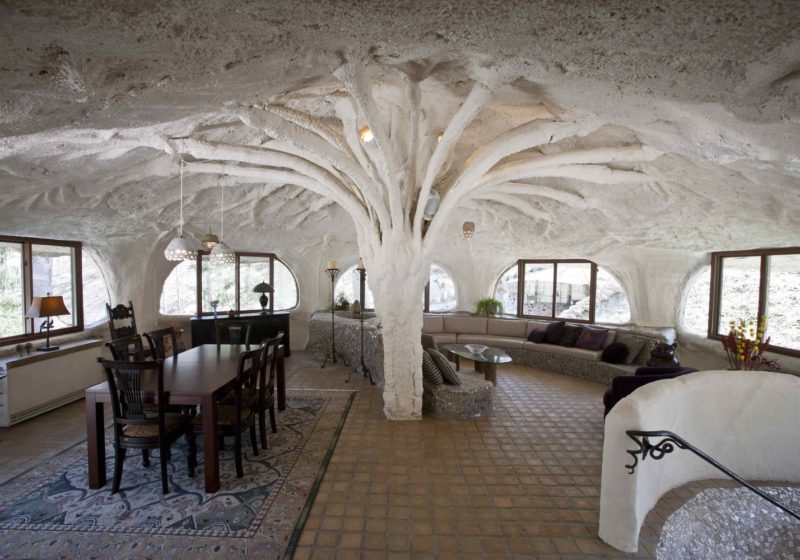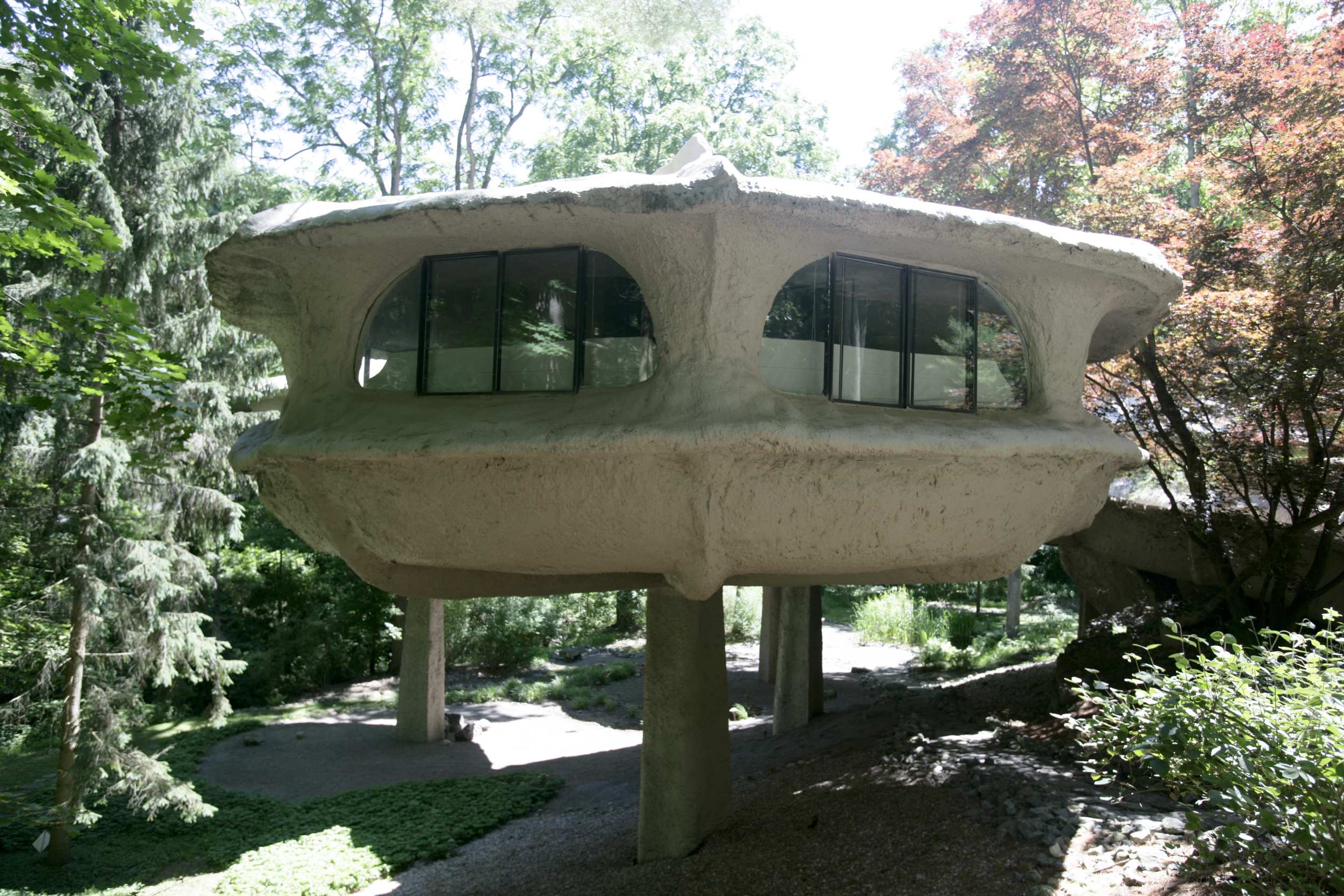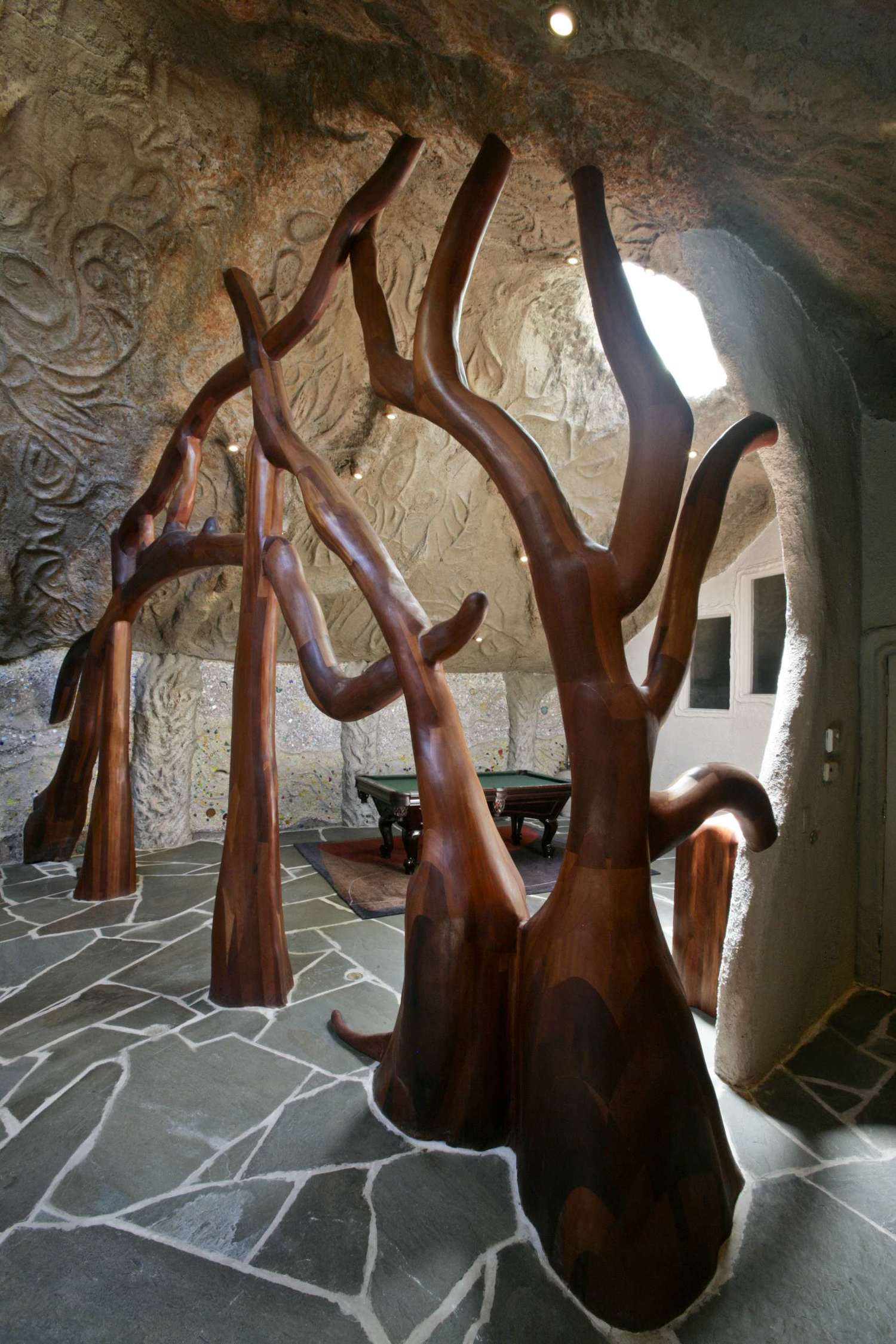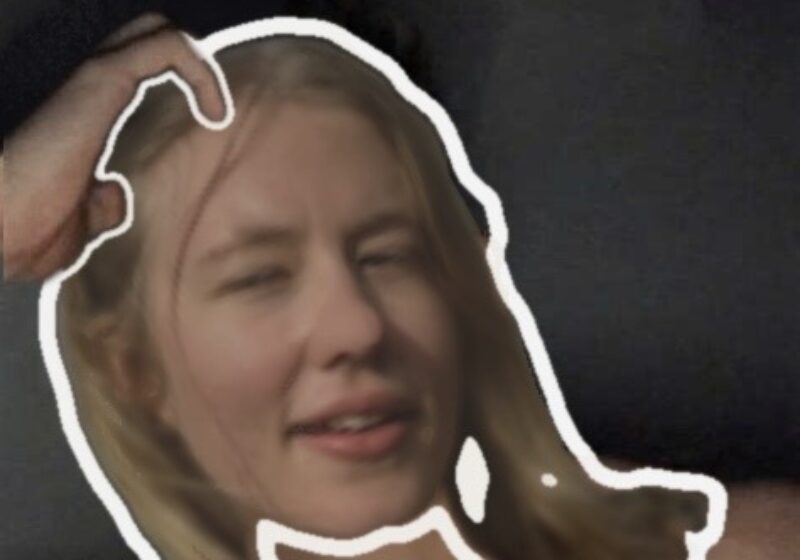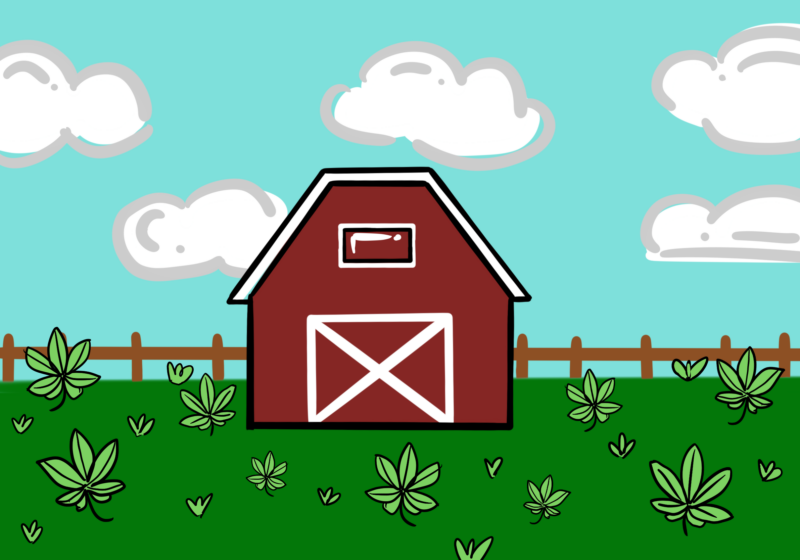Roughly 20 minutes away from River Campus, one might hear sounds of magical flights at the mysterious Mushroom House of Powder Mills Park.
The private residence, designated a Town of Perinton landmark, boasts whimsical architectural designs with tree-like doors and sculptures, treasure-filled mosaics, and naturalistic components in both the exterior and interior.
This quirky architecture and artistic flair has garnered the Mushroom House its own official website and extensive media coverage. Since the house’s creation, it’s been mentioned in books, newspapers, and magazines, and has actively been covered by MTV, in YouTube videos, and the Channel 8 News. If none of that was enough to compel you to visit this Disney-like structure, the view of the waterfall and surrounding valley might change your mind.
Much like the humble abodes of Disney’s Pixie Hollow (home of Tinker Bell and Co.), the Mushroom House appears to be a collection of ‘found’ parts. The adventure starts from the underground pods and car garage through to the interpod tunnel, reminiscent of the University’s tunnel system, emerging into the external ‘mushrooms.’
The curved tops and inner branches of the ‘mushrooms’ remain intact, resembling any old mushrooms found in a backyard. But the different types of glass, with their unique shapes and textures, used to construct walls of the Great Room and the master bathroom lend the interior a colorful personality. Though simple, the curves of the ceilings in all four ‘mushrooms,’ or ‘pods,’ create acoustics that its website compares to that of Carnegie Hall in New York City. The living and dining rooms contain custom-built seating and the iconic Queen Anne’s Lace Stem — the one that inspired architect James H. Johnson to build the house in the first place for attorney Robert Antell and his wife, ceramic artist Marguerite.
With the help of builders Peter Strong and William Ashton, the four 80-ton ‘mushrooms’ were built from molds on the ground, connecting to stems of different lengths, and eventually the pods. The external pods were then decorated with works of art, including groovy ceramic lighting and handmade tiles, hobbit-like doors, tree and branch sculptures, sand-molded walls and ceilings, custom wood furniture, and swirly iron railings.
These works of art were all designed and created by local artists: Marguerite Antell, Wendell Castle, Adam Chesis, Pepsy Kettavong, Tom Scott, and Dan White.
Though this seems like a dream, it carries a grimy past. The location was originally Acadia Power Company’s hidden factory for the manufacturing of gunpowder and other war artillery.
If that doesn’t freak you out, perhaps the price will. Previously running for $1.1 million, the Mushroom House gained a lot of attention but no offers. It was finally sold for $799,900 to dermatopathologists Michael Gagnier and Theresa Sherrod in 2012. Although this sounds like a lot of money, the reconstruction of these buildings today is estimated to have cost $4.5 million.
Unfortunately for everyone invested in this house, including myself, walk-in tours are unavailable. For now, a YouTube search or the Mushroom House’s official site is the only thing that could satisfy anyone’s craving for expensive, fungal architecture.
